- Home
- Jackie French
Rain Stones 25th Anniversary Edition Page 11
Rain Stones 25th Anniversary Edition Read online
Page 11
It took me three weeks. In those three weeks I became a true writer, sitting cross-legged on the shed floor with an old door as a table, knowing that this was my only chance to keep the car registered. Without that desperation, I don’t think I would ever have pushed myself from the amateur who wrote for love to the writer who wrote for her readers, who worked at her writing instead of simply enjoying the stories that flowed in daydreams and from her pen.
There was one problem. Well, actually there were a lot of problems, like how to keep a very active baby entertained while I wrote, and picking the ingredients for dinner in a thunderstorm, and the chilly night Gladys decided to share my bed.
Nor did I have a typewriter that worked. Luckily, the local tip provided an old tank to repair to collect rainwater, another to shelter the firewood, third-hand corrugated iron to build a chook shed, an ancient bath tub and old drums to heat its water on the stove, and wooden fruit boxes for bookshelves. It also gave me a decrepit typewriter, hidden under a pile of 44-gallon drums and home to a brown snake, which is another story.
I lugged that typewriter triumphantly home down the mountain. It worked! It worked even better with a not-really-new typewriter ribbon. Clackety clack ping! it sang, as I reached the end of each line.
And that was the problem. Smudge hated my typewriter. He hated its noise. He hated that I paid attention to it, instead of mooching about the bush on moonlit nights, baby in the backpack, with him. He decided to mark it as his territory, in the way a wombat always does.
After two weeks of wombat droppings every night on the keyboard, the typewriter keys grew soft and squishy. And the letter ‘e’ didn’t work at all.
But selling a story was my only hope. I kept on typing, leaving out the ‘e’s, then filling them in with biro. E . . . e . . . e . . . e . . . e . . .
It was a story based on an incident years before when I was a student, working part-time as an attendant and then as a cataloguer at the Anthropology Museum at the University of Queensland. My job was to catalogue the possessions of a priest who had worked in Arnhem Land. He had left all he owned to the museum.
Sometimes it was hard to know what to keep. I was pretty sure the museum didn’t need his old pyjamas, or the coffee mug with a mouldy apple core still inside. But had he kept that knot of wood because it was significant, or because he liked the shape?
One item was obviously important. It was an old tobacco box, with a label on top reading, ‘Rain stones. On no account expose to the open air.’
So of course we did, as soon as the curator, the head of the museum, was away for the day. And then . . .
Something happened that by the time I had come to live in the shed I knew I should not talk about. I did not understand at all back then. I know too little to understand now, but more than I did then — and enough to know that even if I had the knowledge, I do not have the right to speak of it.
But that incident became the basis of the first professional story that I wrote — and my ignorance was the most important part of it. I wrote about a girl in a drought like the one the year my son was born, with the creek withered into rock, till all that was left was its deep spring-fed pools, which I shared with the wallabies and snakes, the gum trees fading brown, leaves that crunched like cornflakes on the brittle ground, blue sky as hard as opal and as dry, quartz glaring like tiny suns with soil turned to dust, the wombats thin-ribbed and mad with pain and hunger.
I longed for rain stones that year. The girl in the story believes the only way to make it rain, to ease the desperation all around her, is to find an Indigenous person who can use their rain stones.
But the only Indigenous person the girl knows is the local building inspector, who grew up in Redfern, not the bush. He has never heard of rain stones, nor does he know if he would use them if he had. The story ends as the girl and man hunt for rain stones — and all their implications — together.
It made me cry, even though the ending was a happy one. Patrick White said that if a story makes you cry, even if it is not sad, it works. I thought this story probably did work. But I had no idea how to get a story published.
Vaguely, I thought, ‘Publishers probably live in Sydney.’ So I went up to town — the car still had three and a half weeks of rego left, and half a tank of petrol — and into the local post office. I looked up ‘p’ for publishers in the Sydney phone book. The first one in the list was Angus and Robertson, because it began with ‘A’. So many of the books I had loved as a child had been published by that old Australian firm. I’d even daydreamed that one day I might march in there and hand them a story, and they’d glance at it and say, ‘We love it!’ They’d dash into an office and come out five minutes later, with my book printed and ready to sell . . .
So I sent the story to them.
I heard, years later, what had happened. An editor opened the envelope, then shrieked with laughter at the scribbled-in ‘e’s, the silverfish-nibbled, yellowed paper and — worst of all — my spelling.
I’m dyslexic. My spelling is . . . muddly. I was lucky, mostly, with teachers at school and lecturers at university, who understood that my ideas were far better than my spelling, and who were even prepared to spend hours deciphering my handwriting. I’d assumed that, magically, my spelling had improved since I’d left uni.
It hadn’t.
‘Look at this!’ the editor screeched. She held up the messiest, worst-spelled manuscript they’d ever received. And because they assumed that only someone extremely dumb could have written it, the editor sat in the middle of the office and read it out loud, so everyone could giggle at it.
She read them the first paragraph, and then the second.
No one laughed.
There in the office she read the entire manuscript aloud, and then picked up the phone.
‘We liked your story,’ she told me.
‘Oh. Good.’ I was trying to work out how to ask, ‘How much will you pay me for a story?’ when she said, ‘We’re putting together an anthology of children’s stories. We’ll give you a $200 advance on this one. But would you like to write another for the collection?’
$200! Plus another $200!
‘Yes, please,’ I said, thinking about the farm rates that could be paid, as well as the car rego, the phone bill and tanks of petrol. Maybe I could even afford chocolate . . .
I was a bit startled that they thought it was a children’s story though. As a kid I read books written for grown-ups as well as ones for kids. As an adult I read books for kids as well as for adults. My story had just happened to have a young girl as the main character. But if the publisher wanted stories about kids, then I’d write them. Fast.
The next story was ‘Dancing Dinosaurs’. I had made it up years before, on a bushwalk. A small girl who was with me had forgotten her asthma inhaler and panicked when she found out it was a two-hour walk away. I made up a terrifying story to take her mind off it . . . the friendly kind of terrifying story you enjoy.
It worked. We giggled with fear as we tiptoed through the round, gold-grassed ACT hills that turned into dinosaurs each night. And years later, that story returned.
I posted that story too, still with the ‘e’s scribbled in with biro. Two days later the editor called me again.
‘Would you like to write all five stories in the book?’
This time it was an advance of another $400. $800!! It was enough for us to live on for months.
I suspect that there never had been a proposed collection of short stories. The editor just wanted to see if I was able to write a second story equal to the first.
The third story, ‘Jacob Saw’, was about a blind boy who teaches others to see the world as he does, feeling the currents of air with his skin and ears, smelling the leaves of the bush and the asphalt of the road, using the many, many senses that we who can see forget to use. It was inspired by a woman I deeply admired who had lost her sight at four years old, but ‘saw’ my home by smelling the hot rocks of the shed walls — I’d
built it with stone from the creek — and the scent of water, roses and ripe tomato vines, and knew how to follow the winding track through the trees to our house by the feel of the wind on her face.
Years later, when Elaine became a radio presenter and then a writer too, we became close friends. We email each other at least three times a day. But back then I was too nervous to show the story to her. She didn’t read it for twenty years, then emailed me to say how perfectly I had captured her experience of ‘seeing’. I finally confessed the story was based on her.
Story four, ‘Afternoon with Grandma’, came from my own life too — stories I’d been told by a much-loved relative by marriage, how as a young girl she’d climbed out of her bedroom window when her governess locked her in, and taught herself to read by sneaking to the library, as her governess thought she was too stupid to bother teaching, and anyway, why did a girl need to know how to read?
She and I shared many stories of her past from seventy years before: the giant goannas that reared up to scratch at her on horseback, the Afghan traders bringing rugs from China on their camels through the bush, having heard there was a wealthy homestead where someone might buy them — all tales that would one day find their way into my stories.
By the time I wrote the story much of her memory was lost to Alzheimer’s. When she remembered me it was as a friend from her childhood. It was her whisper in one of those tiny agonised fractions of clarity that I put into the story: ‘I can’t stand it here any more.’ But I wrote of her joy too, for sometimes as I looked at her face I knew that she was living more in distant happy memories she had described to me than in the present day that she could no longer understand. Love lasts, especially love and laughter from when you are young. Remember that, all of you who read this. Store up the laughter and the joy, for times when you may need to live in your memory as well.
And then the last story, ‘Dusty and the Dragon’. During those drought years, wildlife from all around the valley came to the shelter of our gorge, where the deep pools still held water, and there was a small bit of greenness in our garden. And the largest wild creature was a dragon.
This dragon was over two metres long, wider than my shoulders, with arms as thick as my thighs. It waded like a dinosaur through my tomato plants . . . or rather, it moved like the dinosaurs you see reconstructed on TV and in movies that have been modelled on the way modern Komodo dragons move, and the goanna in my garden was very like those ‘dragons’ to the north. Goannas keep growing all their lives, and those lives can be very long indeed.
We called her Lacy. She stole the eggs and ate the chooks, till we cut a window in the chook shed and shut the door. Chooks can fly. Goannas can’t. Lacy climbed up onto the roof and hissed in anger, and then trundled down to eat fermented peaches at the dump, and then got drunk . . . which may be why she climbed a tree when I chased her with the hose one day. A very small tree that bent as she climbed it, till I was face to face with an annoyed goanna clearly thinking, ‘I am not down here, I am up there! I’ve climbed a tree!’
A goanna with a hangover is not to be trifled with either.
The five stories were accepted. The $200, the next $200 and the later $400 were in my bank account, the car registered, ‘new’ clothes bought at St Vinnies for the small boy who had been the baby.
And the book had not come out.
I didn’t think much about it, for a while. I had no idea how long it took to get a book published. Another publisher contacted me and asked if I would write a gardening book — by then I was writing about gardening and farming and ecology for several magazines, as well as a fortnightly column about kids and the bush for the Sunday edition of the Canberra Times. It seemed that you could make a living writing in Australia, a far better one than I’d ever made before, though admittedly we still ate mostly from the garden, our other needs supplied by St Vinnies or the bush.
But at last there was another phone call. Angus and Robertson had merged with another company, and I think maybe there was another merger after that. Each time they rang me to say my book had been accepted and each time they sent me yet another advance, sometimes $100, sometimes more. It’s hard to remember now how many delays there were, or how many advances.
Finally, in 1990, many years after the stories had been written, Cathie Tasker from what was by then HarperCollins called me. The book was to be published at last. That was when I learnt that there is more to publishing a book than a publisher telling you, ‘We’ll publish it,’ and banking the advance.
There is rewriting and more rewriting and then editing. I was lucky indeed to have Cathie as my first tutor in how to truly become professional with my work.
In 1991 a package arrived in our mailbox in town. A blue hardcover book, with a girl reaching out on the front, large translucent white stones in her hands.
No, they weren’t the same as the rain stones I had seen, nor did I know that the story ‘Rain Stones’ would be depicted on the cover — I knew too little back then to even ask about the cover design. The knowledge of rain stones is limited to a few people, after long study equivalent to perhaps several university PhDs, and always connected to their place. But the search for rain stones — not the literal stones, but the understanding and depth of love of the land that they embody — is for us all.
And the book was beautiful. HarperCollins liked it too. They asked if I’d like to write some more books. Within the next three months I’d sent them two more, The Boy Who Had Wings and The Roo That Won the Melbourne Cup. I wrote them as children’s books, which is why I don’t think either really works. I don’t write for ‘kids’. I write for people. But I didn’t have the confidence to do that then.
But with the next book, I went back to what I know.
Because by then Rain Stones had been shortlisted for the 1991 New South Wales Premier’s Literary Award and the 1992 Children’s Book Council of Australia Book of the Year Award. Suddenly people wanted me to talk about my writing.
Talk about my writing? I’d never even thought about writing. It was simply what I did, and had done since I was six years old, when I was bored one Sunday afternoon and wrote a book because I had read all the ones in our bookshelves and at the local library. The headmistress liked it and copied it for the kids at school. There had been hundreds of books since then, and maybe ten thousand stories, spoken or scribbled down, including a trilogy written when I was thirteen and angry at Lord of the Flies and wanted to write a reply (about young people who created a good world on an island off the Great Barrier Reef) that had been taken to the dump after I left home.
And now I had to speak. ‘Daydream,’ I told the kids. ‘A book is just a daydream written down.’
‘She wants kids to daydream,’ muttered one teacher. ‘I think they daydream quite enough already.’
We were both right. A book is a daydream. But you need to daydream well. Athletes train for years, and writers need to train too. I had written for decades, and daydreamed too, but not realised that I needed to think about my writing, work at it and learn my craft, in order to write well.
And so I learnt, first from Cathie, and then from Lisa Berryman. Both women have made me the writer I am today, as well as the writer I will be in twenty years’ time, who will be far better than the one who writes this now.
HarperCollins printed another ten thousand copies of Rain Stones the day it was shortlisted by the CBCA. They also told me they’d publish as many books as I’d like to write. No one realised then exactly how many daydreams were stored in my brain, ready to become books, and quite how many I’d want to write.
I stopped counting at a hundred books, the year I turned fifty. There are probably about two hundred now. Slowly, very slowly, I have learnt my craft.
I rarely read my books after they have been published, partly because I’m focused on the next book and also because when I read for pleasure I prefer the words of others, not the stories my brain already knows. So it had been a quarter of a century since I had l
ast read Rain Stones when Lisa called me to say, ‘We want to do a twenty-fifth anniversary edition of your first book. Will you write an afterword?’
My first book? It would be dated, clumsy, embarrassing! To my shock, the stories worked.
Or they still did for me. Because, as I read, that time came back to me: the years in the shed that were more happiness than hardship, laughing with my son as we danced around the kitchen with a kangaroo called Fuchsia, carrying my son in the pack on my back as I picked bunches of parsley and flowers to sell to the restaurants in town, gathering corn for our dinner, swapping the rabbits I caught for one of Mrs Hobbins’ roast chooks down the road (she loved eating rabbit, but my son and I preferred her home-grown chickens), digging potatoes, watching wombats gossip and spotted quolls dance with their cubs in the moonlight, and walking with Fuchsia and my son in the dusk, the labour of the farm day over.
It was a time of deep, strange joy. Yes, we were desperately poor — when I finally worked out how to claim supporting parent’s benefits, the official who processed my claim was shocked at how little I had been living on, thinking the amount I’d put down for a year was for a single week. It doesn’t cost much to build a house when you use rock from the creek, and third-hand doors and windows given free from building sites to save the owners the cost of carting them away. My son was seven years old before I was able to buy him something new to wear — a woolly jumper. He was ten before I bought new clothes for myself too.
By then I was married to Bryan, who accepted I was a writer, a slightly strange activity, just as I accepted his mildly weird habit of chuckling over books of diagrams. Because of Bryan, the shed had become a comfortable house, room by room added, with an indoor bathroom so I no longer showered in the open air, with the powerful owl peering at me from the pergola as if wondering if I was worth the trouble of trying to carry off to eat.

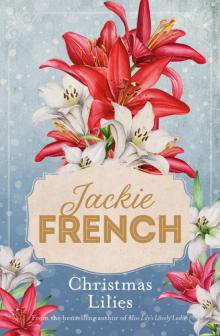 Christmas Lilies
Christmas Lilies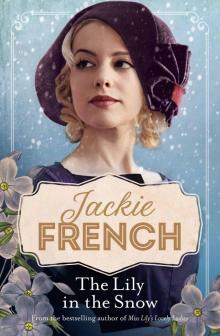 The Lily in the Snow
The Lily in the Snow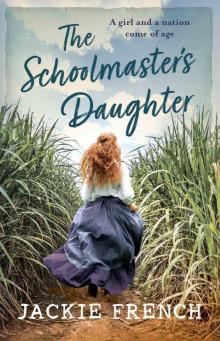 The Schoolmaster's Daughter
The Schoolmaster's Daughter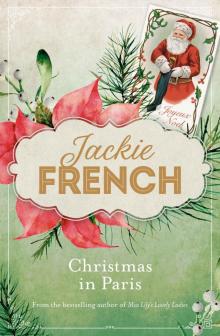 Christmas in Paris
Christmas in Paris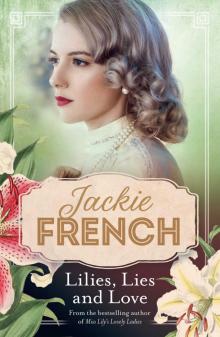 Lilies, Lies and Love
Lilies, Lies and Love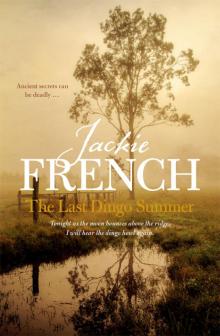 The Last Dingo Summer
The Last Dingo Summer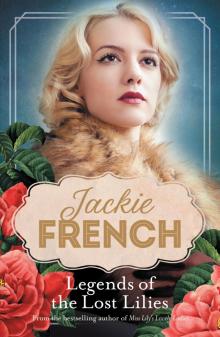 Legends of the Lost Lilies
Legends of the Lost Lilies Just a Girl
Just a Girl Pirate Boy of Sydney Town
Pirate Boy of Sydney Town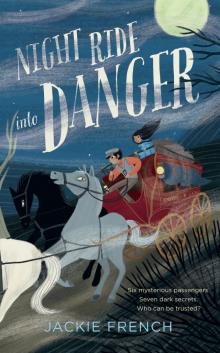 Night Ride into Danger
Night Ride into Danger The Secret of the Youngest Rebel
The Secret of the Youngest Rebel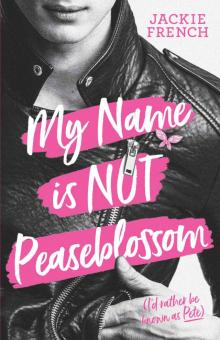 My Name is Not Peaseblossom
My Name is Not Peaseblossom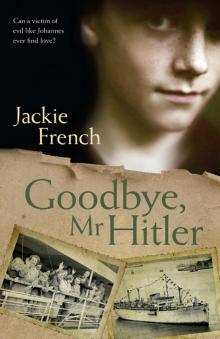 Goodbye, Mr Hitler
Goodbye, Mr Hitler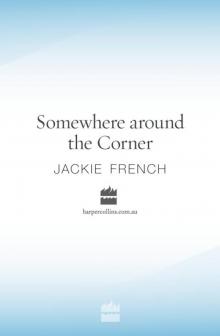 Somewhere around the Corner
Somewhere around the Corner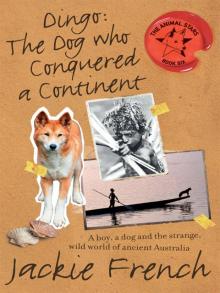 Dingo: The Dog Who Conquered a Continent
Dingo: The Dog Who Conquered a Continent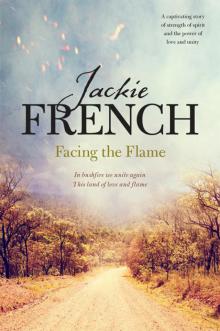 Facing the Flame
Facing the Flame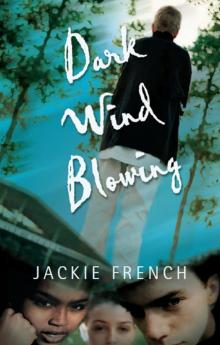 Dark Wind Blowing
Dark Wind Blowing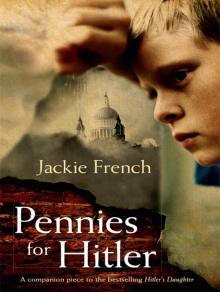 Pennies For Hitler
Pennies For Hitler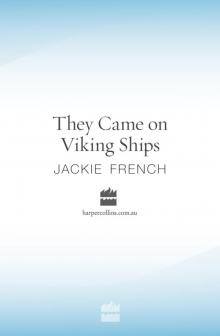 They Came On Viking Ships
They Came On Viking Ships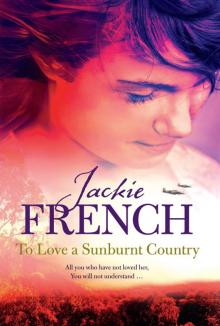 To Love a Sunburnt Country
To Love a Sunburnt Country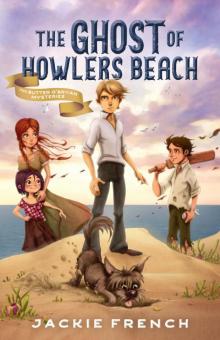 The Ghost of Howlers Beach
The Ghost of Howlers Beach The Girl from Snowy River
The Girl from Snowy River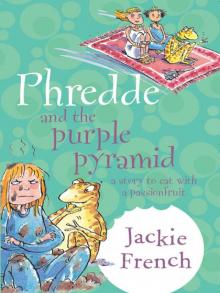 Phredde and the Purple Pyramid
Phredde and the Purple Pyramid The Secret of the Black Bushranger
The Secret of the Black Bushranger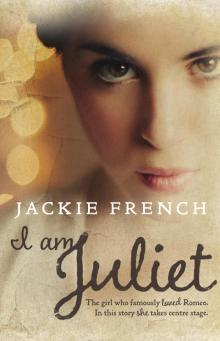 I Am Juliet
I Am Juliet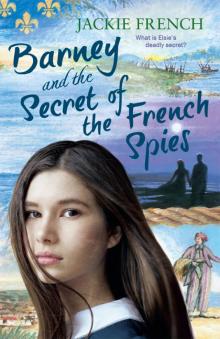 Barney and the Secret of the French Spies
Barney and the Secret of the French Spies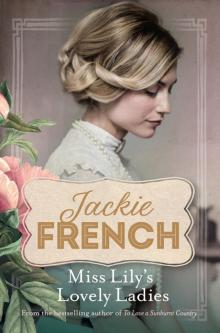 Miss Lily’s Lovely Ladies
Miss Lily’s Lovely Ladies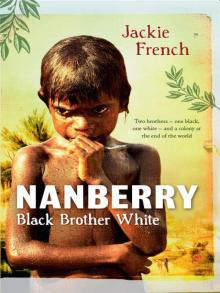 Nanberry
Nanberry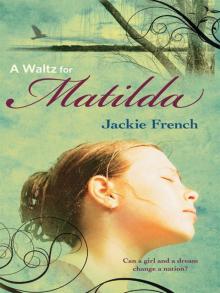 A Waltz for Matilda
A Waltz for Matilda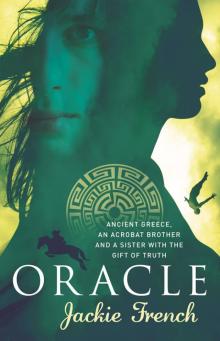 Oracle
Oracle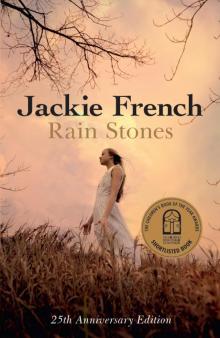 Rain Stones 25th Anniversary Edition
Rain Stones 25th Anniversary Edition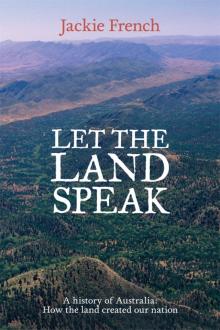 Let the Land Speak
Let the Land Speak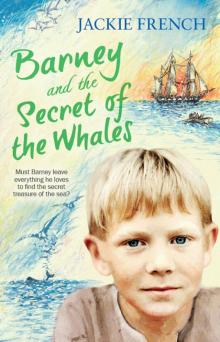 Barney and the Secret of the Whales
Barney and the Secret of the Whales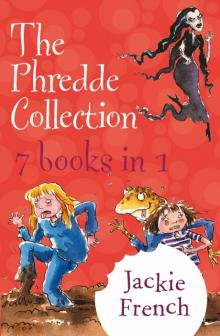 The Phredde Collection
The Phredde Collection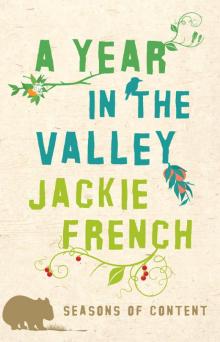 Year in the Valley
Year in the Valley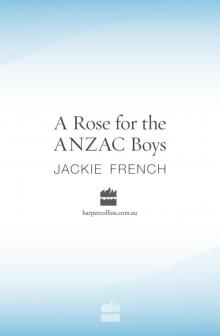 A Rose for the Anzac Boys
A Rose for the Anzac Boys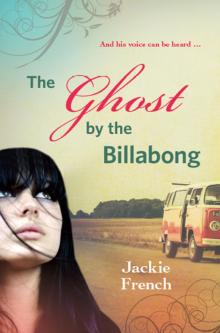 The Ghost by the Billabong
The Ghost by the Billabong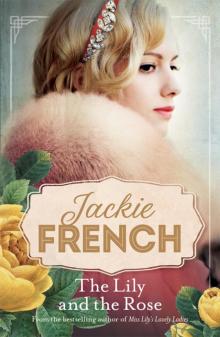 The Lily and the Rose
The Lily and the Rose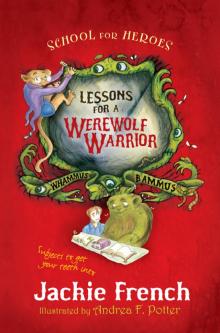 Lessons for a Werewolf Warrior
Lessons for a Werewolf Warrior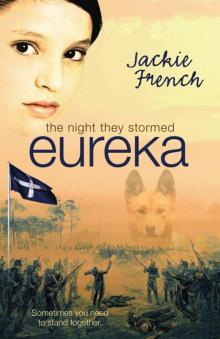 The Night They Stormed Eureka
The Night They Stormed Eureka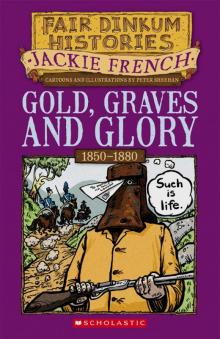 Gold graves and glory
Gold graves and glory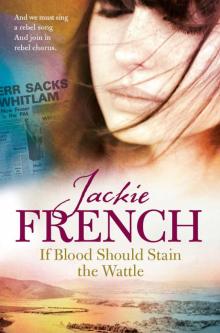 If Blood Should Stain the Wattle
If Blood Should Stain the Wattle The Book of Horses and Unicorns
The Book of Horses and Unicorns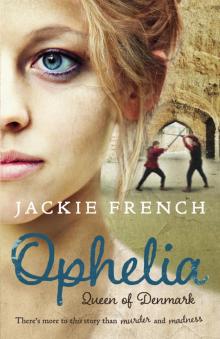 Ophelia
Ophelia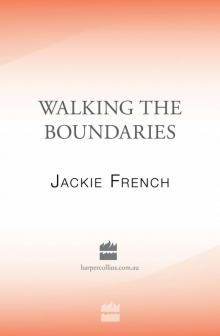 Walking the Boundaries
Walking the Boundaries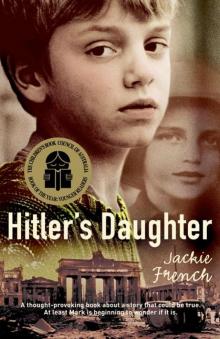 Hitler's Daughter
Hitler's Daughter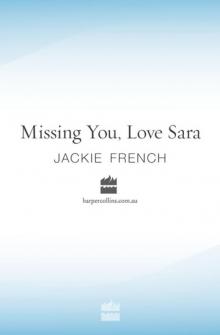 Missing You, Love Sara
Missing You, Love Sara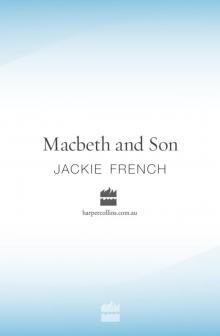 Macbeth and Son
Macbeth and Son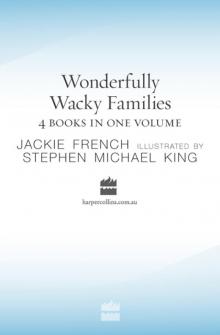 Wonderfully Wacky Families
Wonderfully Wacky Families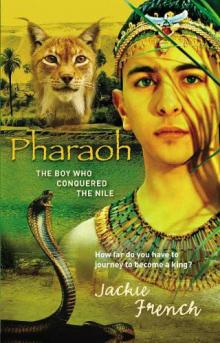 Pharaoh
Pharaoh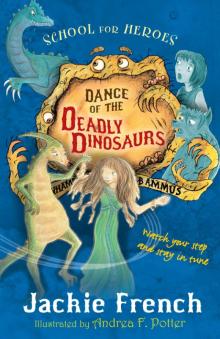 Dance of the Deadly Dinosaurs
Dance of the Deadly Dinosaurs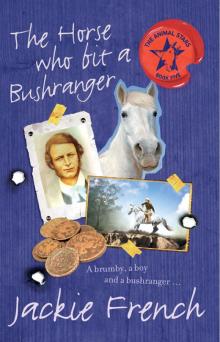 The Horse Who Bit a Bushranger
The Horse Who Bit a Bushranger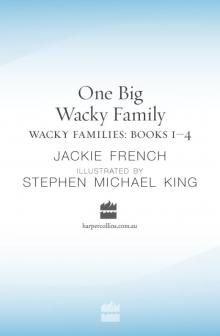 One Big Wacky Family
One Big Wacky Family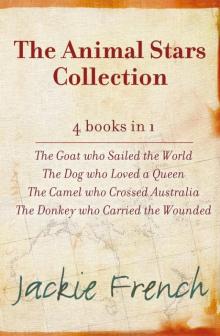 The Animal Stars Collection
The Animal Stars Collection Refuge
Refuge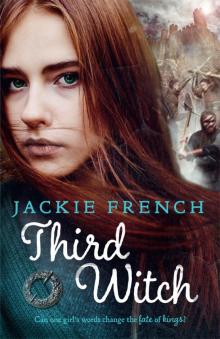 Third Witch
Third Witch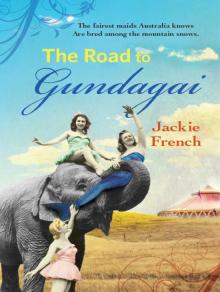 Down the Road to Gundagai
Down the Road to Gundagai